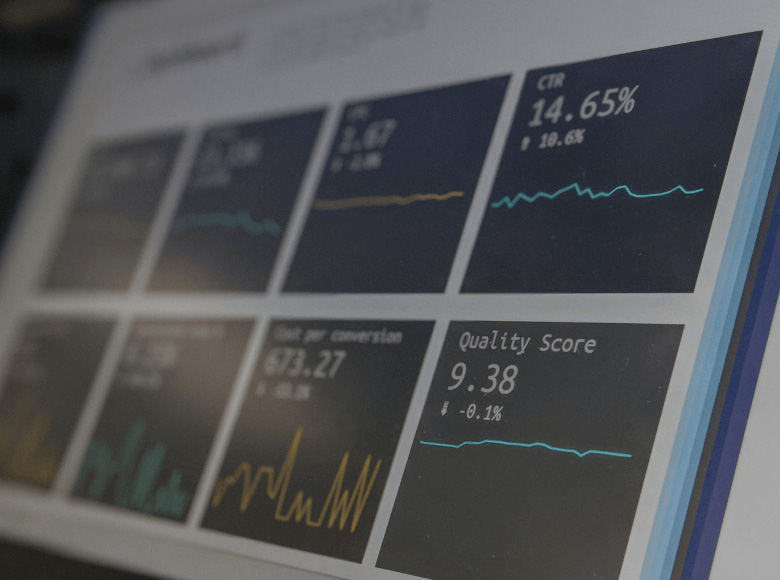- 2020.06.01
- ON MEDIA
What You Always Wanted to Know About Digital Transformation But Were Afraid To Ask (COALAnet vol 6, 2020 Spring Edition)

This is a continuation of our series “What You Always Wanted to Know, But Were Afraid To Ask”, written by one of our company’s consultants. This time, we will be explaining about DX, or Digital Transformation, which is transforming businesses and changing the way people value digitalization.
―― What is the difference between DX and Digitalization?
For example, putting printed books or documents into a “digital” form is considered digitalization. However, by being able to send those items back and forth via an email, or being able to store them on a cloud instead of physically on a shelf has made things like telecommuting possible. This would be a prime example of DX. In other words, to separate it from simple digitalization, DX is the way in which work has changed due to digitalization, or the way in which existing values and actual businesses have been changed because of it.
However, due to the COVID-19 pandemic and the measures taken to prevent further infection, many companies have implemented telecommuting into their current business operations. While this may be a strong point in a company’s ability to mitigate risk, there are other positive examples of how DX implementation has been used to develop businesses and to aid in corporate growth.
―― Can small or mid-sized companies implement DX?
The number of small and mid-sized companies implementing DX is increasing.
Let’s look at an example used by a cram school. Recently, there have been devices introduced into the market containing an IC-chip that can be attached to a child’s belongings. By installing the IC-chip reader at the home entrance, parents can digitally monitor their child’s coming and going for their safety. Now, there are cram schools taking advantage of this type of functionality. The cram schools use it to monitor attendance, and have attached a point system to their student’s attendance record. Students can use their accumulated points in exchange for things like stationery items. One could say that this school used DX as a way to raise a student’s awareness about their school attendance.
―― Are there any other types of examples?
In the used car world, up to now, sellers have brought their cars into specialists in order to have appraisals performed. However, recently there have been special websites set up for this purpose. By simply uploading a picture of their car, a seller can get an automatic appraisal online. The used car dealerships no longer need to rely on appraisers to perform this function, they can offer the seller a better price since there is no money spent on the appraisal, which in turn benefits the seller. At the same time, the dealer can offer the car at a slightly lower price. Further, this will allow for transactions to be possible all over the country.
There is also a very interesting case of a screw manufacturer implementing DX into their business. There are countless screw types. Many screws are hard to come by in small quantities. However, this screw manufacturer decided to implement an EC site for “built to order” manufacturing. To get started, they naturally had to begin by putting many types of screw onto the site. However, by doing this, their EC site became their main business platform. In turn, the company became a leader in the industry by being able to manufacture and deliver so many different types of screws, which led to expansion of their business.
―― Should small or mid-sized companies consider implementing some form of DX?
We do believe that small and mid-sized companies should make every effort to implement some form of DX. While implementing some form of DX does require a reasonable amount of investment, DX is one way to solve the never-ending issue of labor shortage. For small and mid-sized companies with limited labor resources, it is important for a company to streamline areas with random odd jobs and simple tasks in order to increase productivity. DX can help in that respect. Further, those companies that do not implement some form of DX will eventually fall behind their competitors. Along with the advancement of DX, the needs of the current society are changing. Companies can no longer ignore the need for DX.
―― What are the points to keep in mind for small and mid-sized companies when implementing DX?
First, management needs to identify that there is a need for change, and make the decision to move forward. Next, all employees need to buy-into the idea of DX implementation, ensuring that the entire company is on-board for what is to come. The reason being is because implementation of DX will require time, man-power, and money. Further, post-implementation, the way in which work is performed will change drastically, and everyone must be open to accepting and adapting to those changes. Unfortunately, you may encounter resistance from senior employees who are used to doing their job “the old-fashioned way”, and are opposed to implementing DX. In the case where these senior employees are in management positions, this could cause confusion for the people working below them. If you are going to implement any form of DX, you need to have the mindset that you may completely abandon “the old-fashioned way” of working.
Next, assuming that the company has agreed to moved forward with implementing DX, the next task at hand is to figure out exactly where in the company you want to implement, which part of the business will use it, and come up with a specific and comprehensive plan of action. You should employ the assistance of people who are experts in IT and DX.
―― Are there any issues with implementing DX?
Small and mid-sized companies tend to implement a system once, and use it for a very long time. However, technology is advancing at an extremely fast rate. Often times, systems that were implemented as “state-of-the-art” become obsolete quickly. However, many small and mid-sized companies often have the opinion that “if it’s not broken, why fix it?” Companies continue to use their old system, leading to missed opportunities as changes in society occur. This is one point that companies should always keep in mind.
However, I believe that the biggest challenge is the lack of human resources. When implementing DX into a small or mid-sized company, there is a lack of people able to make pertinent decisions regarding the investment. This is most likely because many companies operate not feeling the need for DX in their business. The key is developing staff who understand IT and DX, who also have a deep understanding of company’s internal workings, in order to have a successful implementation of DX.
―― What are some ways in which small and mid-sized companies can overcome the challenge of lacking human resource?
One way to conquer this is to develop internal staff by having them participate in external trainings. However, there are already companies that build DX specifically for small to mid-sized corporations. Outsourcing the work to one of these companies may be a more realistic answer. However, even if one outsources the work, it is vital that the company continue to maintain a high level of interest in DX, and that the company understand its effectiveness to a certain degree.
Commentator: Masaru Koga (Principal)
--------------------
COALAnet
COALAnet is a publication regarding the regional economy, published in partnership by 3 companies in different market sectors.
COALA is an abbreviation for the words “Co”mpany, “Co”mmunity, and “Alli”ance. The purpose of this publication is to provide information that is of value to companies, and to stress the importance of cooperation between different companies, companies and regions, and between different regions, and to contribute to regional revitalization.










